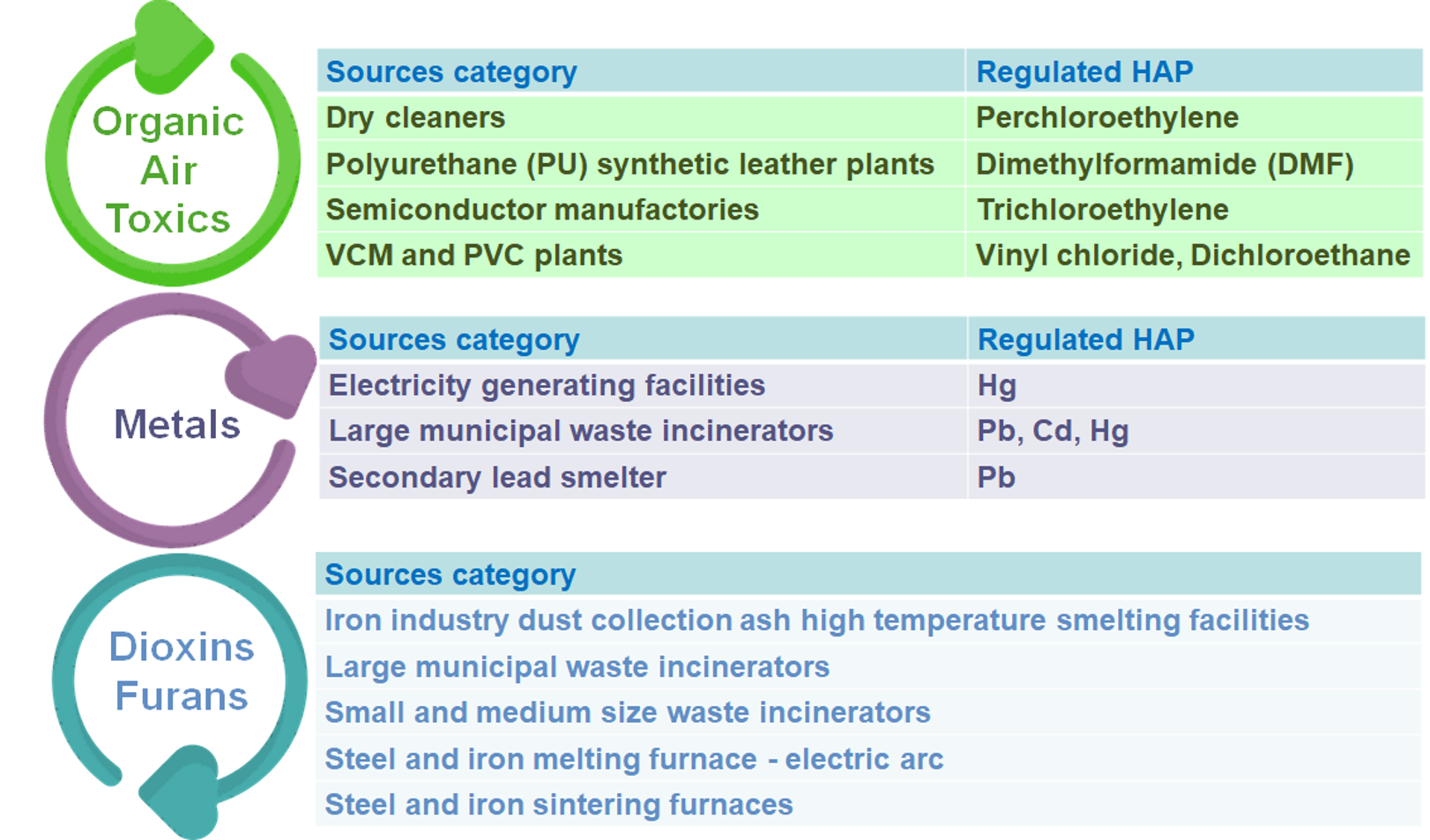The MOENV's work on hazardous air pollution (HAPs) control is divided into dioxins, heavy metals, and other HAPs.
For dioxins, an emission inventory of all domestic dioxin sources has been calculated and five industry-specific standards (large waste incinerators, small and medium size waste incinerators, electric arc furnaces for steelmaking, iron sintering plants, iron industry dust collection ash high temperature smelting facilities) for dioxin emissions control were established in 1997. In addition, a general stationary source emission standard was also established to manage all possible sources of dioxin emissions. It was estimated that total annual dioxin emissions were reduced from 327.4 g I-TEQ in 2002 to 47.7 g I-TEQ in 2021, a reduction of 85%. The annual average concentration of dioxins went from 0.051 in 2010 to 0.030 in 2021. The annual average values are 10 times lower than the environmental quality standards for dioxins (0.6 pg-TEQ/m³) set by the ministry of the Environment of the Government of Japan in 1999.
For heavy metals, in 2021 in Taiwan, the emissions of lead (Pb), cadmium (Cd), mercury (Hg) and arsenic (As) were 30.1, 0.755, 1.75 and 2.73 metric tons, respectively. Emission standards for waste incinerators were established to control stack emissions of Pb, Cd, and Hg in 2006. The stack emission standards of Pb and Hg were set respectively for lead secondary smelters and power plants. The MOENV will continue to supervise factories to reduce the use of mercury and work towards a mercury-free environment.

Considering the impact of hazardous air pollutants (HAPs or air toxics) on public health, in addition to setting dioxin and heavy metal emission standards, the MOENV also established industry-specific emission standards for semiconductor manufacturing, polyurethane (PU) synthetic leather, dry cleaning operations, and vinyl chloride and polyvinyl chloride manufacturing since 1997 so as to control organic air toxics. The Air Pollution Control Act amendment announced on August 1, 2018 added several provisions to strengthen the control of air toxics from stationary sources. Under the authority of the Air Pollution Control Act, the EPA has successively established several regulations related to HAPs control, including a “List of hazardous air pollutants and emission limits of the first batch of stationary sources”, “Health risk assessment processes for hazardous air pollutants from stationary sources”, “List of public and private places which should be set up for air pollution prevention units or personnel and health risk assessment personnel”, and “Emission standards of hazardous air pollutants for stationary source”.
In addition to legal orders, the air pollution fee has been levied on 13 volatile organic compounds since January 1, 1999, and on five heavy metals and dioxins since July 1, 2018.
The follow-up control of HAPs of stationary sources involves reducing the impact of HAPs emissions by establishing rules or regulations, strengthening existing permits and emission reporting systems, to conduct emission reduction plan for potential plants in high-risk potential areas (also call hot spot area), as well as the ambient air concentration monitoring network, to achieve the purpose of protecting public health.